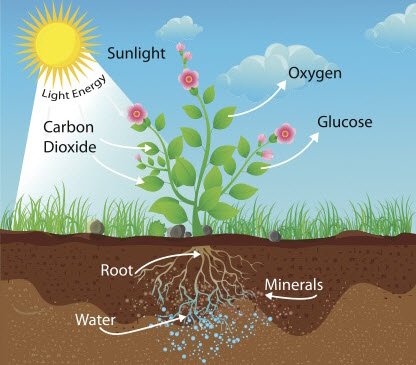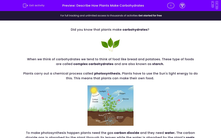Did you know that plants make carbohydrates?

When we think of carbohydrates we tend to think of food like bread and potatoes. These type of foods are called complex carbohydrates and are also known as starch.
Plants carry out a chemical process called photosynthesis. Plants have to use the Sun's light energy to do this. This means that plants can make their own food.

To make photosynthesis happen plants need the gas carbon dioxide and they need water. The carbon dioxide gas is absorbed by the plant through its leaves while the water is absorbed by the plant's roots. The Sun's light energy is used to help make glucose and oxygen. Glucose is a sugar also known as a simple carbohydrate.
So what does the plant do with the glucose?
The glucose produced in photosynthesis has a variety of uses. Some of the glucose is used to create other chemicals needed in the plant such as proteins. Some is used for respiration (when energy is released by cells) while some glucose is changed into starch and stored in the plant's leaf, stem or roots for later use.
.png)
In this activity, we will describe how plants make carbohydrates.
Let's get started.








